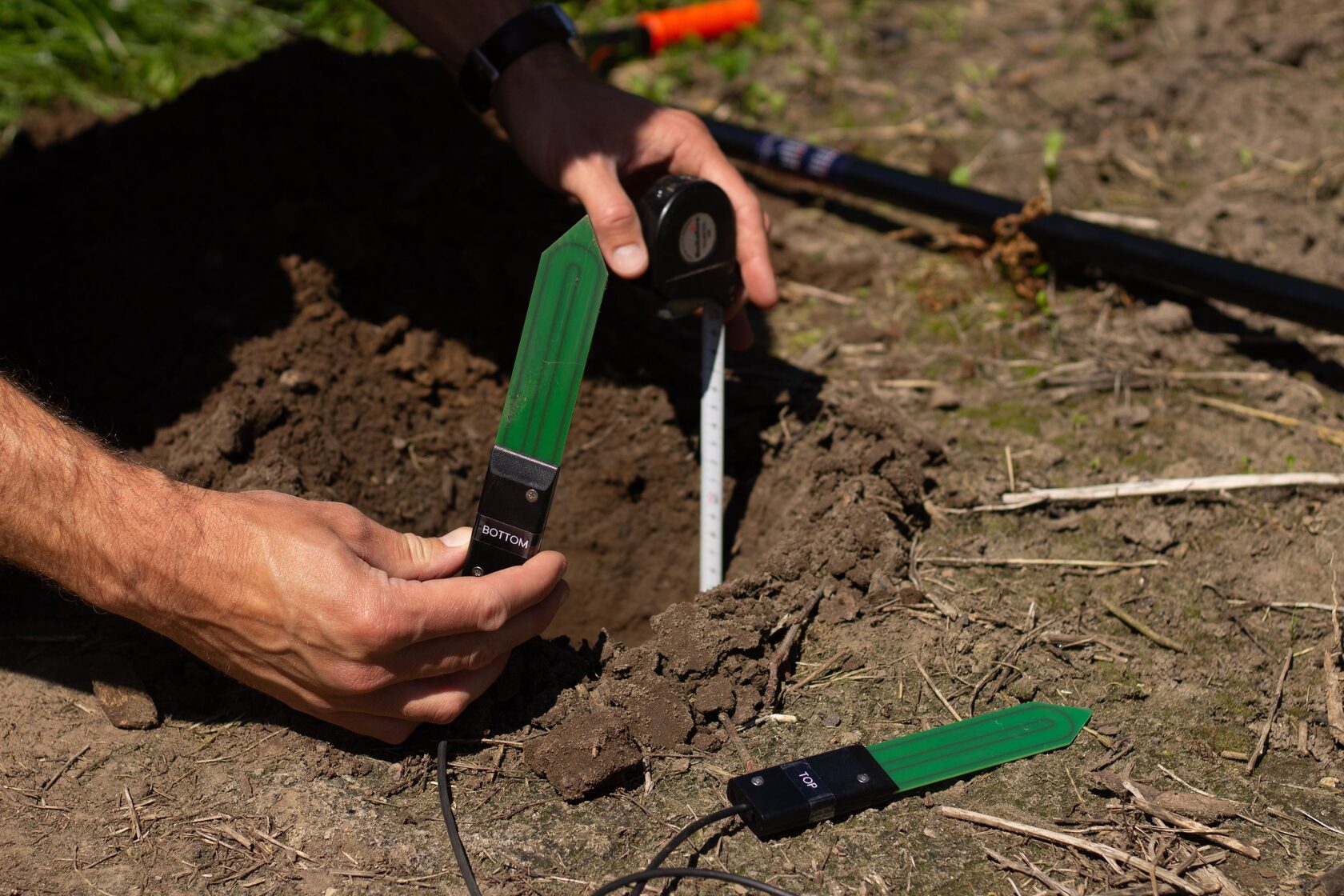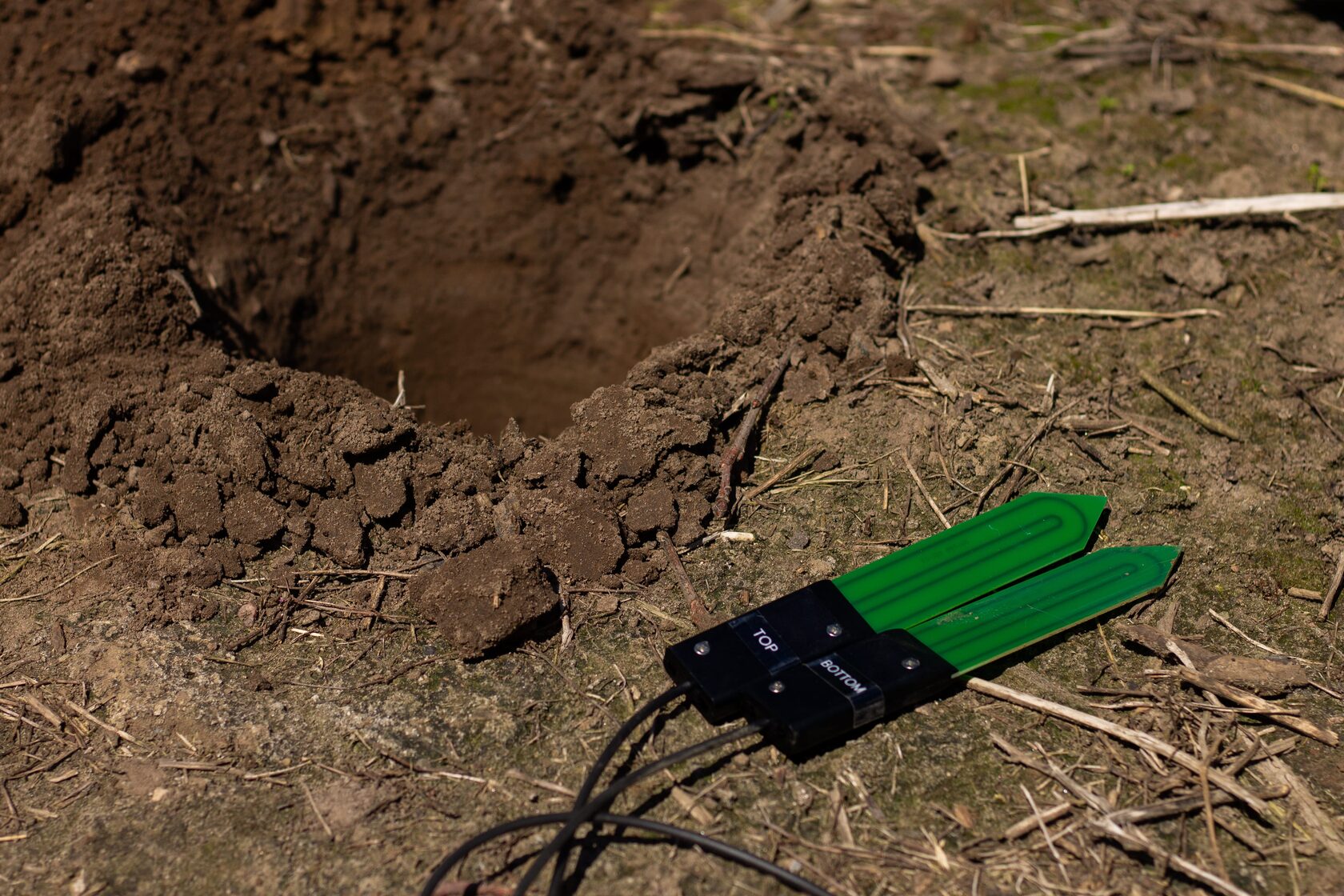Plants need important nutrients like nitrogen, phosphorus, and potassium to grow well and produce good harvests. If these nutrients are too low, crops can struggle and give poor yields, but using too much fertilizer can also lead to problems.
Fertilizer is expensive, and using it incorrectly can waste money and harm the environment: excess water can wash unused nutrients deep into the soil, where plants can’t reach them. This process, called nitrate leaching, can also pollute rivers and groundwater.
Traditional soil analysis methods, while accurate, can be expensive and not always practical for many farmers.
Soil Moisture Sensors: A Dual-Purpose Tool
While soil moisture sensors are mainly used to measure how much water is in the soil, they can also help prevent nutrient loss, especially when placed correctly.
By installing soil moisture sensors at different depths of the root zone, farmers can track not only how much water is in the soil, but where it moves.
For example, when a sensor placed at the bottom of the root zone signals that the soil is wet, farmers can tell when water — and potentially nutrients — are starting to drain over the lower boundary of the root zone.
With this information, farmers can timely adjust irrigation before it causes nutrients to drain beyond the plant’s reach, keeping both water and nutrients in the root zone, where plants can use them effectively.
Best Practices for Irrigation and Sensor Use
Here’s how to use soil moisture sensors effectively to reduce fertilizer waste:
Place Sensors Accordingly: Put one sensor at the bottom of the root zone to spot over-irrigation. For extra monitoring, you may consider adding another sensor below the root zone.
Monitor Real-Time Data: Regularly check sensor readings to adjust irrigation as needed.
Avoid Irrigation Below the Root Zone: Adjust your watering schedule to avoid watering beyond the root zone. This helps keep nutrients and water where plants can use them.

Real-Life Results
Farmers who use soil moisture sensors report significant improvements.
For example, a study found that poor drip irrigation management is one of the main causes of fertilizer loss in greenhouse tomato farming in Almeria, Spain.
Fertilizer is one of the biggest expenses in farming, both financially and environmentally. Soil moisture sensors are a simple way to help farmers keep water and nutrients in the right place.
A Smart Farming Practice
Precision agriculture combines technology with farming to help farmers do more with less.
While soil moisture sensors may not measure nutrients directly, their ability to track water movement and detect over-irrigation makes them an useful tool for reducing fertilizer waste. Placing soil moisture sensors in the right spots can make a big difference. It’s an affordable and easy way to save money, grow healthier crops, and protect the environment by reducing waste and pollution.
